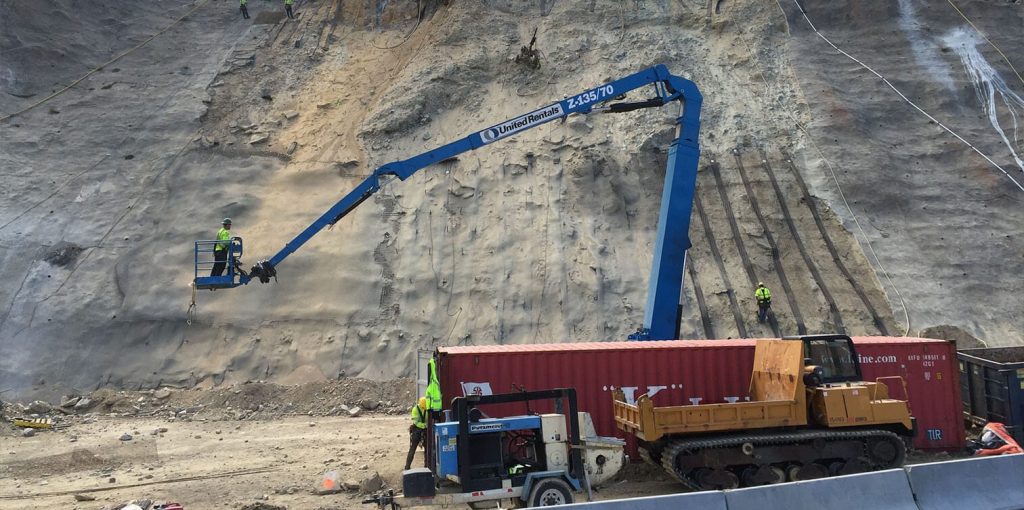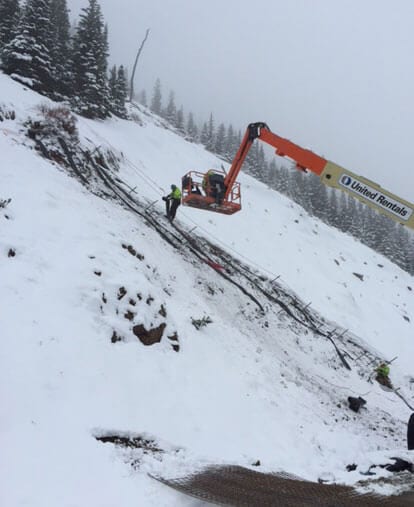
When the slopes along the northern highway into Yellowstone National Park began to fail, GeoStabilization rose to the challenge. Our crews worked on ridges with 10,000+ foot elevations in some the most unforgiving weather in North America. From October through December, they endured harsh conditions and severe winds, pausing only during periods of extreme avalanche danger. Once each avalanche risk subsided and the state snowplows could keep the road clear, our crews resumed work and completed the project on time before Memorial Day Weekend traffic began.
 The goal of the project was to remove the existing shotcrete facing that was installed in the 1970s. The facing had begun to decay rapidly, causing a possibility that the slope would fail and undermine the safety of the roadway switchback above. The project entailed removal of old concrete, re-drilling anchors, and finally shotcreting the wall at four sites. The fifth site required the construction of a complex soil nail wall below the roadway with access only from the roadway surface above.
The goal of the project was to remove the existing shotcrete facing that was installed in the 1970s. The facing had begun to decay rapidly, causing a possibility that the slope would fail and undermine the safety of the roadway switchback above. The project entailed removal of old concrete, re-drilling anchors, and finally shotcreting the wall at four sites. The fifth site required the construction of a complex soil nail wall below the roadway with access only from the roadway surface above.
During the project, the crews battled the mountain and the elements. Often the men worked using rope-access methods due to the steep terrain. In addition to the dedication of GeoStabilization’s crews, our purpose-built equipment ensured success on the project. “Just like working on your car, having the right tools made all the difference,” stated Cameron Lobato, GeoStabilization’s Western Division Director. “Our wagon drills, SPIDER drill, air tracks, slusher bucket, Maruka crane, and pallet drills enabled our men to quickly and professionally complete the tasks, and I believed they contributed to our crews’ safety since all work was completed in extremely challenging weather with the temperature repeatedly dropping to -20°F during the workday. Every crew member was physically taxed, but at the project’s completion we all took great satisfaction in our work and the positive feedback from our customer.”
